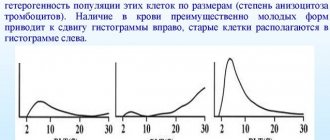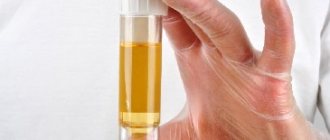Amylase is an organic protein substance (enzyme) of the pancreas and salivary glands. During food fermentation, amylase performs the function of breaking down polysaccharides (starch and glycogen) into simple carbohydrates containing monosaccharide residues, otherwise oligosaccharides.
Laboratory microscopy of blood and urine evaluates diastase (pancreatic α-amylase filtered in the renal apparatus). Amylase in urine is not determined as part of the general analysis. An enzyme test is prescribed separately to assess the health and performance of the pancreas.
The diastase indicator in the biochemical composition of the blood is less informative for diagnosis, since a small amount of the substance enters the systemic circulation. α-amylase is active in the body of animals and humans. Other types of the substance β-amylase and γ-amylase are found in plants.
Indications for the study
A urine test for amylase is prescribed if there are symptoms accompanying inflammatory processes in the digestive tract:
- functional intestinal disorder with characteristic gas formation and pain;
- difficult and painful digestion (dyspepsia);
- causeless nausea and reflex release of stomach contents (vomiting);
- pain in the left abdominal area against the background of low-grade body temperature (37-38 °C);
- frequent urination (pollakiuria) with little urine output.
Alpha-amylase microscopy is routinely performed in patients with chronic pancreatitis, diabetics, people suffering from kidney disease, and cancer patients. The analysis data is used in the diagnosis of functional disorders of the pancreas, diabetes mellitus and prediabetic conditions.
Laboratory assessment of amylase content in urine is carried out in adult patients and children (regardless of age). A high concentration of diastase is recorded during the period of acute manifestation of symptoms (the time interval ranges from 12 to 72 hours). Indicators reach their maximum 24 hours after the onset of the attack.
Features and characteristics of the enzyme
Amylase is determined using a special laboratory test, which is not mandatory, but helps to confirm or cancel the preliminary diagnosis made if the development is suspected:
- dysfunction of the salivary glands located near the ears (parotid salivary glands);
- mechanical damage to the pancreas;
- pancreatitis;
- damage to the peritoneal organs;
- decompensated hyperglycemia;
- infectious diseases associated with a viral attack.
A urine test for amylase will help determine the presence of the disease, which will be repeated later (during therapy), but to monitor the patient’s condition.
There are several types of enzyme, one of which is an enzyme found in the body of animals, the other, plant-based, is used in the production of malt, as it is part of wheat, but alpha-amylase is an enzyme produced by the pancreas and salivary glands of humans. This is one of the most important enzymes that ensures the efficient functioning of the gastrointestinal tract.
The fact is that in the human stomach such a process as complete absorption of starch is impossible. The body can absorb it after splitting. This process takes place with the direct participation of pancreatic amylase, under the influence of which starch is gradually converted into glucose. The peculiarity of alpha-amylase is its different concentration levels in the human body at different times of the day. This is important for those who like late or even night snacks.
After such a meal, the food eaten remains undigested in the stomach for a long time, causing fermentation to begin, which contributes to the appearance of diseases such as gastritis or even peptic ulcers.
Urine amylase test
Alpha amylase is not gender specific, so there are no significant differences in the tests of men and samples taken from women. The exception is the perinatal period in a woman’s life. Due to a change in hormonal status, a radical restructuring occurs in the female body, which is reflected in the quantitative content of hormones and enzymes in biofluids (blood and urine).
A routine determination of amylase concentration is carried out as part of the first and last screening. A slight increase in the level of diastase during pregnancy is not a pathology. Very high levels indicate an inflammatory process. In this case, the woman needs hospitalization and a detailed examination.
Based on age, low pancreatic enzyme levels are normal for infants. In older people, in the absence of chronic pathologies of the endocrine system, diastasis in the urine may decrease due to age-related characteristics of the body. This does not apply to abnormal changes.
The analysis has two types:
- One-time urine collection. The patient needs to collect urine once, in the morning, and submit it to the laboratory.
- Daily diuresis. Urine is collected throughout the day with each urination in a special container. Next, it is mixed, and part of the biofluid is sent for testing.
The second option provides higher information content of the results, since the enzyme content in urine is unstable during the day. The choice of type of study depends on the decision of the attending physician.
During the examination, the biomaterial under study reacts with iodine and heated starch. The color shade of the liquid serves as an indicator of enzyme concentration. You can view the results the next day after taking the test.
Pancreatic amylase
Alpha amylase has two different forms that are almost identical: salivary and pancreatic.
The first type of amylase is produced in the salivary glands and enters the blood with saliva.
Pancreatic amylase is produced by the pancreas . It accumulates and, with the help of other enzymes, penetrates the duodenum. This enzyme is especially important for the normal functioning of the body, as it helps break down carbohydrates, proteins, and fats.
During normal functioning of the body, pancreatic amylase enters the blood only in minimal quantities.
Rules for collecting material
To obtain objective data on the content of alpha-amylase in urine, it is necessary to adhere to medical recommendations for collecting the analysis and preliminary preparation. Otherwise, the study will show incorrect values, which will affect further treatment of the patient.
The same conditions for one-time analysis and daily diuresis are:
Blood test for lipase
- purchasing a special sterile container for urine from the pharmacy;
- eliminating salty foods, spicy marinades, seasonings and spices from the diet (at least 12 hours before urine collection);
- temporary exclusion from the menu of beets, asparagus, carrots, rhubarb, blackberries due to their ability to color urine, alcoholic beverages (24 hours before);
- refusal of diuretic drugs, corticosteroids, anabolic drugs, oral contraceptives for (2-3 days);
- restriction of physical activity on the eve of urine collection for a one-time analysis, for daily diuresis - throughout 24 hours;
- Carrying out hygiene procedures for the external genitalia immediately before urination.
For a one-time analysis, it is necessary to submit an average portion of morning urine for examination. To do this, you first need to urinate into the toilet, then into a special container, and then back into the toilet. Close the container tightly and deliver to the laboratory within 2 hours. Daily analysis begins at 6 am.
There is no need to collect the first portion of urine (after waking up), since it contains mucus components. For all subsequent urinations, urine must be collected in one large container. The collected biomaterial should be stored in a refrigerator, hermetically sealed. A day later, all collected urine is mixed.
The pharmaceutical container is filled with biofluid (30 ml is enough for evaluation), closed with a lid and submitted to the laboratory. Genital hygiene is a necessary procedure before each urination for 24 hours. On the recommendation of the doctor, the patient writes down the total amount of urine released per day and the main foods eaten during this time.
Advice! A 2-3 liter jar is suitable as a container for daily diuresis. Before use, it must be thoroughly washed and sterilized over steam or in the oven.
In infants, a special pediatric urinal, which is attached between the baby’s legs, helps to properly collect urine. After the baby urinates, the urine must be poured into a sterile pharmacy container and sealed.
The container for analysis is selected depending on the required amount of urine
For women, it is mandatory to insert a tampon into the vagina before the procedure (a sponge can be an alternative) to avoid vaginal gland secretions from getting into the container. You cannot donate urine during the follicular phase of the menstrual cycle (the period of bleeding).
Decoding the analysis results
The result of a biochemical analysis is a form in which all the studied indicators are listed in one column, and their meaning in the other. Depending on the standards adopted in a particular medical institution, amylase may be indicated by the inscriptions: “AMYL”, or “Alpha-amylase”.
Amylase (the normal level in the blood of women and men should be in the range from 28 to 100 units/l) increases with gastrointestinal pathologies. However, drawing conclusions based on the results of the analysis, making a final decision about the presence or absence of a disease and prescribing treatment is the task of the doctor, not the patient.
Normal values of alpha-amylase in urine
The laboratory value for measuring the concentration of diastase in urine is U/L or U/h. The rate of amylase in urine collected once differs from the rate of daily diuresis. Reference values for adults are:
- one-time analysis – from 10 U/l to 490 U/l;
- daily diuresis – from 10 U/l to 600 U/l.
For an infant, standard values are considered to be from 5 U/l to 65 U/l. An increase in enzyme activity is a clinical sign of an acute condition or relapse of chronic diseases of the digestive organs, salivary glands, urinary and endocrine systems.
Diet for amylase level disorders
An increase and decrease in the enzyme is mainly provoked by various diseases of the digestive system. A specific case requires an individual therapeutic program. Common to all diseases is the requirement to adhere to a certain diet.
Advice! Nutrition should be gentle, but not limited. Indeed, some foods will have to be eliminated or their consumption reduced. But the list of what is allowed is quite extensive.
There are certain rules, following which you can easily organize optimal nutrition. It will enhance the effect of drug therapy:
- Preference should be given to cooking methods such as baking, stewing, and boiling.
- It is better to use meat obtained from young animals. Also, these should be non-fat varieties. The same rule applies to fish.
- It is necessary to completely exclude smoked meats, kidneys, and brains.
- When cooking, the amount of fat should be minimal, or better not use it at all.
- When consuming fresh fruits, it is recommended to cut off the peel. White cabbage is undesirable among vegetables, especially fresh.
- Food should not be excessively hot or, on the contrary, very cold.
- It is best to choose bread from grade I or II flour. It is necessary to limit fresh baked goods made from butter or puff pastry.
- Spices and vegetables, which irritate the mucous membranes of the digestive system, are completely excluded from the diet.
Soups should have a slimy consistency. You can also prepare pureed soups with milk, vegetable or meat (low-fat but strong) broth.
It is also possible to prepare main courses from cereals, with the exception of millet - porridges, puddings, casseroles. They can be supplemented with stewed or boiled vegetables.
Deviation from standard values
To establish the exact cause of increased diastase, the patient is referred for a general and biochemical blood test and a number of additional diagnostic procedures. Depending on the expected diagnosis, the following is prescribed:
- Ultrasound of the abdominal organs;
- extended blood test to determine glucose tolerance and glycated hemoglobin levels, hormone and enzyme levels.
- FGDS (fibrogastroduodenoscopy);
- general clinical and detailed biochemical analysis of urine;
- coprogram (stool analysis);
- examination on a tomograph (MRI, CT).
An increased concentration of amylase in urine may signal the development of:
- acute inflammation of the pancreas (pancreatitis);
- relapse of chronic pancreatitis (possible progression of a severe complication of the disease - pancreatic necrosis);
- syndrome of impaired movement of food through the digestive tract (intestinal obstruction);
- diabetes mellitus or an acute complication concomitant with the disease - diabetic ketoacidosis;
- inflammation of the serous covering of the peritoneum (peritonitis);
- ulcerative or erosive lesions of the duodenum and stomach;
- ectopic pregnancy;
- malignant or benign tumors in the pancreas;
- cholelithiasis (cholelithiasis) and urolithiasis (presence of stones in the bladder and ducts);
- CRF (chronic renal failure);
- alcohol intoxication;
- parasitic infestations;
- acute contagious lesions of the salivary glands, pancreas, testes (mumps, otherwise mumps);
- acute and chronic appendicitis.
The most common causes of increased alpha-amylase in urine are pathologies of the pancreas. For example, in acute pancreatitis, the enzyme content can increase twenty times
In women, high diastasis is recorded against the background of chronic gynecological diseases. When a possible diagnosis is confirmed, long-term control over the level of diastase and other biochemical parameters is established. If the analysis shows a significantly reduced level of alpha-amylase, then the changes are associated with a deficiency of the digestive enzyme.
In this case, liver diseases (hepatitis, cirrhosis, cancer), congenital pathology of the pancreas (cystic fibrosis), and enzyme deficiency of a congenital or acquired nature (enzymopathy) are considered. With a reduced enzyme content, the activity of the thyroid gland in producing hormones is increased. In this case, hyperthyroidism is diagnosed.
Low concentrations of α-amylase are observed in patients in the postoperative period after surgical intervention in the abdominal organs. Partial or complete pancreatectomy (resection of the pancreas) is particularly affected. A reduced enzyme level does not allow the digestive organs to fully process and absorb carbohydrates. The metabolic process is disrupted, and chronic diseases of the gastrointestinal tract (gastrointestinal tract) develop.
Level reduction
The main reason for a decrease in the level of pancreatic alpha-amylase in the urine is insufficient functioning of the pancreas. It can be associated with pancreatectomy - surgical removal of an organ, as well as with long-term progressive diseases leading to damage to a large number of cells: chronic pancreatitis (with pancreatic necrosis), cystic fibrosis, proliferation of a malignant tumor. In addition, the reason for the reduced level of pancreatic amylase in the urine may be a violation of its filtration in the kidneys, caused by macroamylasemia or renal failure. Such conditions are usually accompanied by an increase in serum enzyme activity.
Results
Pancreatic alpha-amylase (diastase) is a digestive enzyme that processes complex carbohydrates (starch and glycogen). In urine analysis, amylase is an indicator of the enzymatic function of the pancreas and salivary glands. Urine collection for the study of α-amylase is carried out in two ways, each of which corresponds to the norm of enzyme content.
| Collection method | Decoding | Norm |
| one-time analysis | one dose of morning urine | from 10 U/l to 490 U/l |
| daily diuresis | total amount of urine passed in 24 hours | from 10 U/l to 600 U/l – for |
An increase in diastase in the urine indicates the presence of acute or chronic diseases of the endocrine system, digestive organs, renal apparatus or salivary glands. The disease can be diagnosed based on the results of a laboratory test, or the patient is referred for an extensive examination, based on the results of which the doctor determines further treatment tactics.
A reduced enzyme level indicates metabolic disorders, liver diseases and congenital pathologies. Low levels are not dangerous only for children under one year old (the standard value is from 5 U/l to 65 U/l). The level of amylase in urine is the most important diagnostic criterion, therefore, when collecting urine yourself, you must strictly follow medical recommendations.
Why is this enzyme necessary?
The enzyme converts complex sugars into easily digestible ones for the human body. Amylase is mostly synthesized by exocrine cells of the pancreas and enters the duodenum through the major duodenal papilla (papilla of Vater) through the common pancreatic duct.
In the intestines, during the digestion of food, the enzyme fully performs its functions, and a small part of it enters the circulatory system. The rest of it is excreted in the urine through the kidneys.
Taking this into account, there are two main forms of the enzyme:
- alpha-amylase in the blood;
- diastase (another name for the enzyme) in the urine.
Accordingly, to determine the level of amylase, a blood test (hemotest) and a urine test for diastase are prescribed.
Diagnostics
Since most of the amylase is excreted from the body in urine, elevated levels in the urine are signs of diseases such as diabetes mellitus, dysbacteriosis, hepatitis, pancreatitis, renal failure, peptic ulcer disease, and pancreatic cancer.
It is worth noting that a biochemical urine test for this enzyme is a more informative diagnostic method than a blood test.
Diagnostics is carried out in two ways:
- One-time analysis;
- Collection of daily urine.
The second option is a priority, since the composition of urine changes throughout the day. Therefore, to determine pathologies, it would be correct to collect biomaterial within 24 hours.
It is necessary to take into account the following factors to prepare for the analysis and to carry it out correctly:
- A few days before submitting the material, avoid physical activity and alcoholic beverages. Reduce intake of spicy, salty foods, foods high in fat, and, if possible, stop taking diuretics and other medications. Women are prohibited from getting tested during their menstrual periods.
- For collection, prepare a large sterile container (sold at the pharmacy). All urine during the day must be collected into it; the container must be stored in the refrigerator. Before each urination, you should perform genital hygiene under running water.
- At the end of the day, the collected urine is thoroughly mixed, 30 ml is poured out and delivered to the laboratory for diagnosis.
How are tests and preparation carried out?
To determine the amount of enzyme in plasma, blood is taken from a vein on an empty stomach in the first half of the day. You should not eat fatty foods the day before, as this may affect the results. It is also recommended to collect urine for testing in the morning on an empty stomach.
Before doing this, it is important to wash the external genitalia.
Blood is drawn from a vein only on an empty stomach
In addition, urine should be delivered to the laboratory immediately; refrigeration of the material for analysis is prohibited, since the amount of enzyme in it can be sharply reduced, which will give false results.
What is important to exclude on the eve of taking a blood and urine test:
- alcohol;
- psycho-emotional stress;
- playing sports;
- fast food;
- spices;
- chocolate.
Blood and urine are delivered to the laboratory immediately after collection and the amount of amylase in the submitted material is measured using special optical instruments. For this purpose, reagents are used, such as: benzoic acid, iodine, instant starch and sodium chloride. The amount of amylase is calculated after it interacts with the indicated components. During the reaction, the color of the solution changes. The test is carried out by heating a mixture of reagents and adding test material to them.











